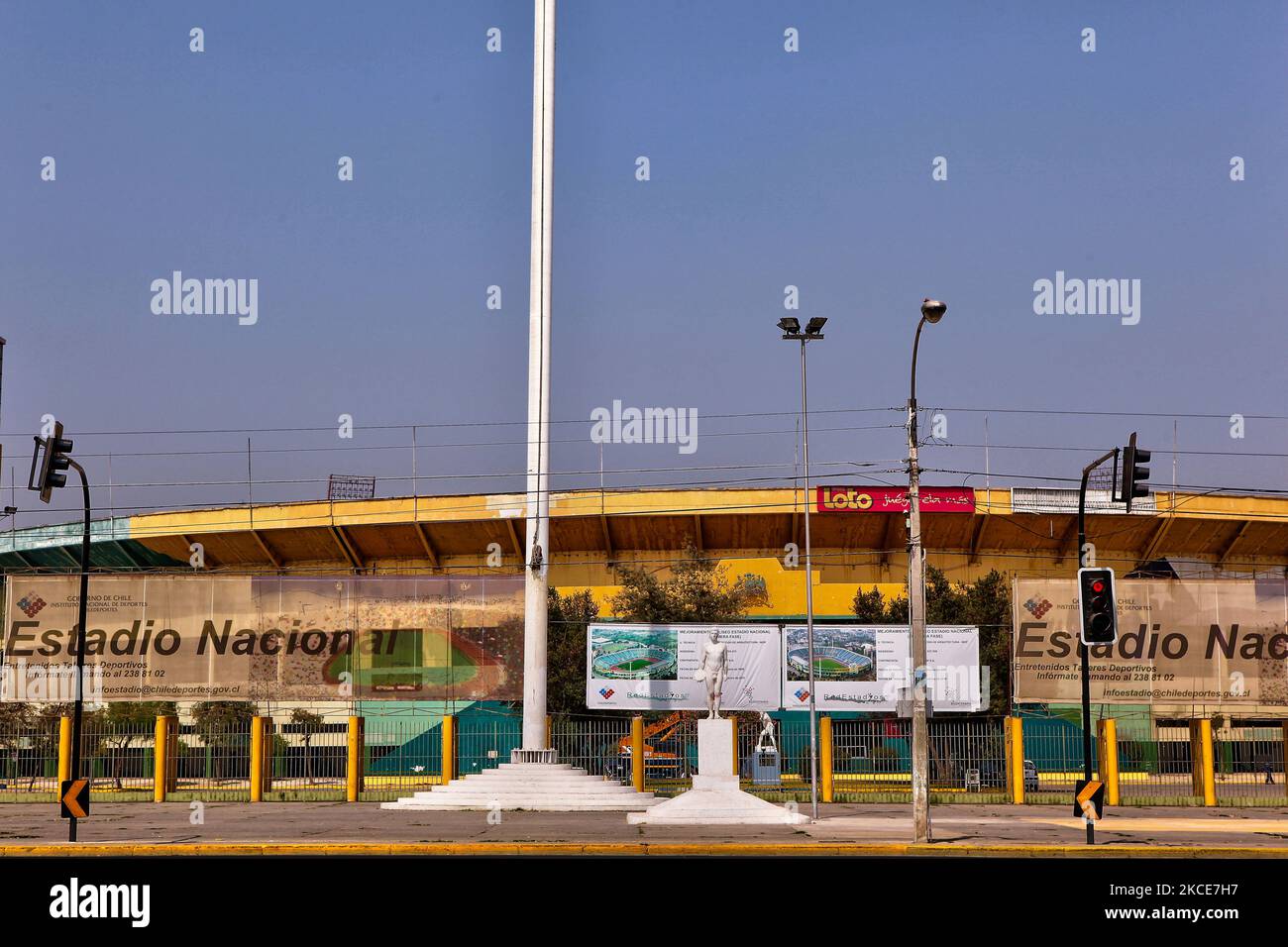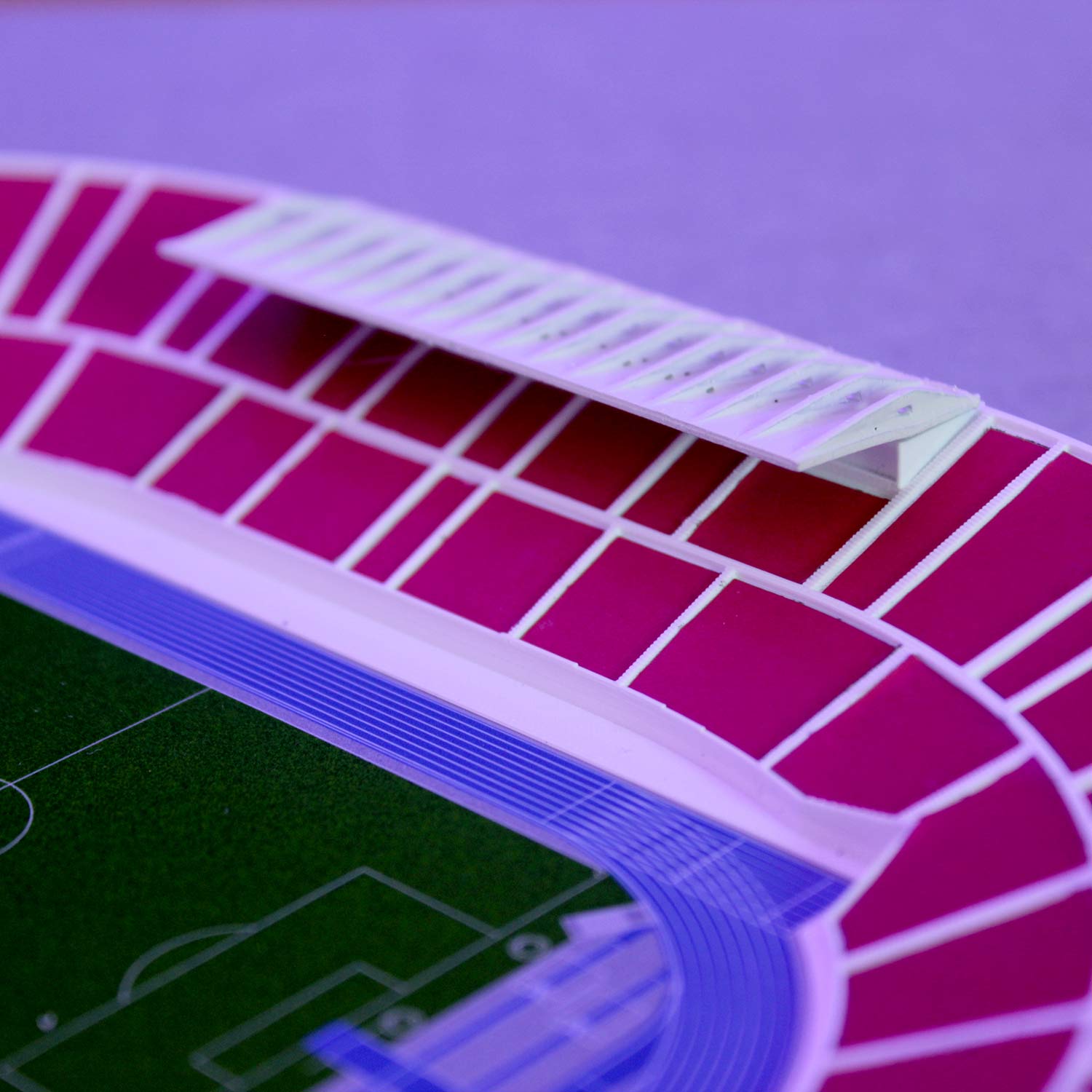AI-Generated Article
This content has been automatically generated using artificial intelligence technology. While we strive for accuracy, please verify important information independently.
Chile, a land of stunning landscapes and passionate people, holds a special place in its heart for sports, especially football. Right in the vibrant energy of Santiago, a truly remarkable structure stands tall, reflecting the very spirit of the nation. This grand place, known to many as the Estadio Nacional Julio Martínez Prádanos, is more than just a massive building; it's a living story, a gathering spot, and a symbol of what Chile has been through, both its triumphs and its tougher times. It really is, in a way, a monument to the country's journey.
This stadium, which is the principal sports venue in Chile, is located within the Ñuñoa district of Santiago. It holds a significant position, being the largest stadium in the entire country. People often call it simply "Estadio Nacional," but its full name honors Julio Martínez Prádanos, a name that resonates deeply with sports fans and historians alike. So, you know, it's not just a name, it’s a tribute.
For anyone keen to understand Chile's sporting heritage, or perhaps, just to feel the immense scale of a truly important national landmark, the Estadio Nacional Julio Martínez Prádanos offers a compelling experience. It has, quite literally, witnessed some of the most memorable moments in the country's collective memory, from thrilling sports events to other significant gatherings. It's a place that has seen it all, and it continues to be a central point for the nation's activities, very much so.
- Finley Point Farms
- Finca La Carrodilla
- Xgigix Georgina Shilingis
- Bezos Store Discount Code
- Julio Cesar Pimentel Soriano
Table of Contents
- A Look Back at History: The Foundations of a National Icon
- A Place of Grand Events: The 1962 World Cup and Beyond
- More Than Just Football: A Multipurpose Complex
- Design and Capacity: A Colossus in Santiago
- The Stadium's Significance: A Symbol for Chile
- Visiting the Estadio Nacional Julio Martínez Prádanos
- Frequently Asked Questions About the Estadio Nacional
A Look Back at History: The Foundations of a National Icon
The story of the Estadio Nacional Julio Martínez Prádanos begins quite a while ago, in 1938, when it was first built. This was a significant undertaking for Chile at the time, establishing a major venue for sports and other national activities. It was, you know, a very forward-thinking project for its era, laying down a strong foundation for future generations.
Interestingly, the ground where this massive structure now stands was once farmland. A generous farmer named Jose actually donated the land for its construction, which really speaks to the community spirit and the vision behind creating such a national asset. So, in some respects, the stadium literally grew from the Chilean soil, which is quite a thought.
Over the years, the stadium has naturally seen various changes and upgrades, but its core identity as the national stadium of Chile has remained constant. It was originally simply known as "Estadio Nacional," a straightforward name for a straightforward purpose. This long history means it has been a witness to countless moments, both big and small, that have shaped the country, and that's pretty amazing.
A Place of Grand Events: The 1962 World Cup and Beyond
One of the most famous chapters in the stadium's history involves the 1962 FIFA World Cup. This global football event brought international attention to Chile, and the Estadio Nacional played a very central role, hosting numerous matches. It was, arguably, the biggest sporting spectacle the nation had ever seen at that point, truly putting Santiago on the world stage.
The stadium had the distinct honor of hosting the 1962 FIFA World Cup final, a truly historic moment for world football. This event alone cemented its place in sports history, making it a landmark recognized far beyond Chile's borders. It's a memory that, you know, still resonates with football enthusiasts everywhere, a bit like a timeless classic.
Beyond that legendary World Cup, the Estadio Nacional has continued to be the main stage for Chile's national football team. It's where they play their most important matches, where hopes are high, and where fans gather to cheer them on. It's the home turf, the place where the national team feels most connected to its supporters, and that's a very special bond.
More Than Just Football: A Multipurpose Complex
While football is certainly a huge part of the Estadio Nacional's identity, it is actually much more than just a football stadium. It's part of a larger, multidisciplinary sports complex, known as the Parque Deportivo Estadio Nacional. This complex covers a vast area, making it a significant hub for various athletic pursuits, which is pretty impressive.
This extensive complex means the venue can host a wide array of sports, not just football. Rugby matches have taken place here, showcasing the stadium's versatility. It's also seen significant boxing events, drawing large crowds for different kinds of athletic contests. So, you know, it's a truly adaptable space for many kinds of competitions.
The Estadio Nacional's role extends beyond sports, too. It has been a significant venue for major music concerts, bringing international and local artists to perform for thousands. It has also, quite importantly, served as a gathering place for political events, reflecting its deep connection to the country's social and civic life. It's a place where history, in a way, is constantly being made, which is pretty cool.
Design and Capacity: A Colossus in Santiago
When you see the Estadio Nacional Julio Martínez Prádanos, its sheer size is often the first thing that strikes you. It's described as a "colossus of concrete and steel," a truly imposing structure that dominates its surroundings in the Ñuñoa district of Santiago. This design allows it to accommodate a huge number of people, which is quite a feat of engineering.
The stadium is the largest in Chile, with an official seating capacity that has been cited around 46,190 or even 48,665. This makes it capable of holding immense crowds for its events, generating an incredible atmosphere. So, you know, when it's full, the energy must be absolutely palpable, a truly unforgettable experience.
Its design, while functional for a sports venue, also contributes to its status as an iconic landmark. The way it was built, the materials used, all contribute to its enduring presence. It’s a place that has stood the test of time, reflecting the architectural styles of its construction era while adapting to modern needs. It's a big, strong building, basically, and it's built to last.
The Stadium's Significance: A Symbol for Chile
The Estadio Nacional Julio Martínez Prádanos is far more than just a collection of stands and a pitch; it stands as a profound symbol of Chile’s history. It reflects both the nation's significant sports achievements, like hosting the World Cup, and, quite importantly, some of its darker periods. It's a place that holds complex memories, honestly, for many Chileans.
Recognizing its deep historical and cultural value, the stadium was declared a historical monument in 2003. This designation acknowledges its importance not just as a sports arena, but as a place deeply intertwined with the national narrative. It means, in a way, that its story is part of the country's official record, which is pretty significant.
It's an icon, a place that reverberates with the heartbeat of Chilean football and, more broadly, Chilean life. Its moments, both glorious and challenging, have shaped collective memory. People learn about its origins, its design, and its evolution as a key part of understanding the country itself. It's a very central piece of the puzzle, so to speak.
Visiting the Estadio Nacional Julio Martínez Prádanos
For anyone in Santiago, visiting the Estadio Nacional Julio Martínez Prádanos can be a truly enriching experience. It's a chance to connect with a vital piece of Chilean heritage, to walk where legends have played, and to feel the echoes of history. You can learn about its architecture, its memorable moments, and even find out how to participate in or enjoy events there. It's a place, you know, that really invites you in.
Located conveniently in the Ñuñoa district, it's generally accessible for those exploring Santiago. Whether you are there for a football match, a concert, or just to explore the grounds, it offers a glimpse into the scale and significance of Chile's main sports venue. It’s a very tangible connection to the country's public life, basically.
To plan your visit, it’s often a good idea to check for upcoming events or tours. For instance, if there's a match, like a particular football duel, information on times and channels is usually widely available. A match might be played on a specific date, like Thursday, July 17th, at 18:00 hours Chile time, with an international time of 22:00 GMT, as an example. You can learn more about Chilean sports history on our site, and find more details about Santiago's landmarks right here.
Frequently Asked Questions About the Estadio Nacional
Here are some common questions people often have about this important Chilean landmark:
What is the capacity of the Estadio Nacional Julio Martínez Prádanos?
The Estadio Nacional Julio Martínez Prádanos is the largest stadium in Chile, and its official seating capacity is typically stated as 46,190 or sometimes 48,665. This allows it to host very large crowds for various events, from football matches to concerts. So, it can hold a lot of people, which is pretty amazing.
What significant historical events took place at the Estadio Nacional?
The stadium has been the site of many important historical events. Most notably, it hosted the 1962 FIFA World Cup final and several other matches during that tournament. It has also served as a venue for significant political gatherings and cultural events, reflecting its deep connection to Chile's national story. It’s been a witness to a lot, basically.
Where is the Estadio Nacional Julio Martínez Prádanos located?
The Estadio Nacional Julio Martínez Prádanos is located in the Ñuñoa district of Santiago, Chile. It is part of a larger complex known as the Parque Deportivo Estadio Nacional, which is a multidisciplinary sports facility. It's a very central and well-known spot within the city, you know, a true landmark.
For more information on major sports venues, you could check out resources like Wikipedia's page on the stadium.
🖼️ Related Images



Quick AI Summary
This AI-generated article covers Discovering The Heart Of Chilean Sports: The Estadio Nacional Julio Martínez Prádanos with comprehensive insights and detailed analysis. The content is designed to provide valuable information while maintaining readability and engagement.
Danika Barrows PhD
✍️ Article Author
👨💻 Danika Barrows PhD is a passionate writer and content creator who specializes in creating engaging and informative articles. With expertise in various topics, they bring valuable insights and practical knowledge to every piece of content.
📬 Follow Danika Barrows PhD
Stay updated with the latest articles and insights